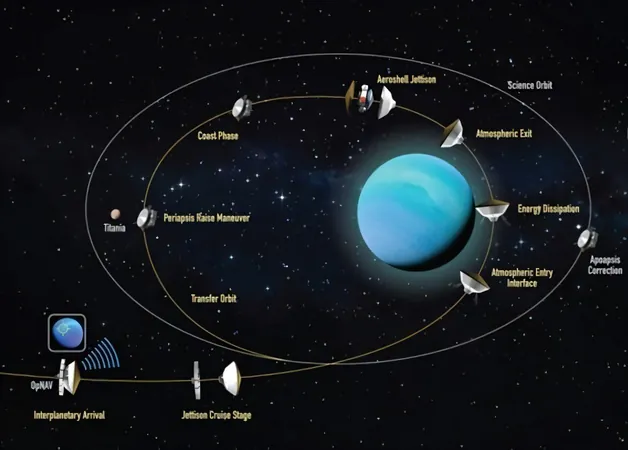
Searching for Life Beyond Earth: What If We Find Nothing?
2025-04-27
Author: Olivia
The Search for Extraterrestrial Life: A Different Perspective
As humanity looks to the stars in search of life beyond our planet, a thought-provoking question arises: What if we discover absolutely no signs of life on any exoplanets? A team of researchers from ETH Zurich, led by Dr. Daniel Angerhausen, is exploring this very scenario, revealing how the absence of life can provide valuable insights about our universe.
The Bold Study: Finding Meaning in No Life
Published in *The Astronomical Journal*, the study delves into what can be understood if future exoplanet surveys yield a ‘perfect’ null result—no detectable life at all. Using Bayesian statistical analysis, the researchers suggest that if we study between 40 to 80 exoplanets and receive a definitive ‘no life’ response, we could confidently assert that fewer than 10-20% of similar planets host life. This estimate could mean around 10 billion potentially habitable worlds existing in our Milky Way.
Understanding the Nuances of 'No Detection'
However, achieving a perfect no-detection result isn't straightforward. Observational uncertainties pose significant challenges, such as misinterpretations leading to false negatives. If a planet is labeled uninhabited due to missing biosignatures, the data could be misleading. Angerhausen emphasizes the need for careful analysis: "We must craft the right questions and have a realistic confidence in our findings. A large survey without that understanding could lead us astray."
Preparing for Future Missions: The LIFE Project
These insights are particularly relevant for the upcoming Large Interferometer for Exoplanets (LIFE) mission, driven by ETH Zurich. This ambitious project aims to investigate dozens of Earth-like exoplanets by analyzing their atmospheres for water, oxygen, and potential biosignatures. Fortunately, the planned sample size is expected to yield significant conclusions regarding life in our galactic vicinity.
Statistical Methods: Bayesian vs. Frequentist
The research also compares Bayesian statistics with the Frequentist approach, shedding light on how prior knowledge affects observational outcomes. Interestingly, for the anticipated sample sizes of the LIFE mission, results from both methods show limited variance, reinforcing the validity of the findings. Co-author Emily Garvin highlights the importance of recognizing that different research questions may require tailored statistical approaches.
Rethinking Research Questions: The Path Forward
Ultimately, the study underscores the crucial need to formulate precise research questions and utilize the appropriate methodologies for credible interpretations. As Angerhausen notes, "A single positive detection would revolutionize our understanding. Yet even if we find no life, we will still measure the prevalence of planets capable of hosting detectable biosignatures, providing clarity on their existence in the cosmos."
Conclusion: The Endless Quest for Knowledge
In the grand quest for extraterrestrial life, even negative results can lead to monumental discoveries. As we prepare for exciting new missions that push the boundaries of our knowledge, every piece of data—positive or negative—brings us one step closer to understanding our place in the universe.









 Brasil (PT)
Brasil (PT)
 Canada (EN)
Canada (EN)
 Chile (ES)
Chile (ES)
 Česko (CS)
Česko (CS)
 대한민국 (KO)
대한민국 (KO)
 España (ES)
España (ES)
 France (FR)
France (FR)
 Hong Kong (EN)
Hong Kong (EN)
 Italia (IT)
Italia (IT)
 日本 (JA)
日本 (JA)
 Magyarország (HU)
Magyarország (HU)
 Norge (NO)
Norge (NO)
 Polska (PL)
Polska (PL)
 Schweiz (DE)
Schweiz (DE)
 Singapore (EN)
Singapore (EN)
 Sverige (SV)
Sverige (SV)
 Suomi (FI)
Suomi (FI)
 Türkiye (TR)
Türkiye (TR)
 الإمارات العربية المتحدة (AR)
الإمارات العربية المتحدة (AR)